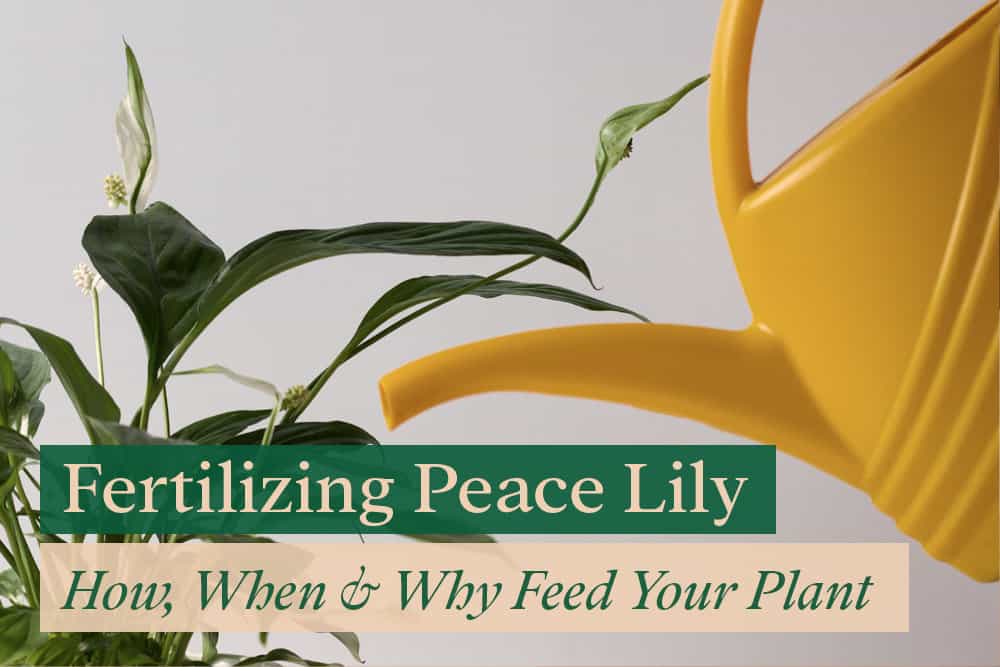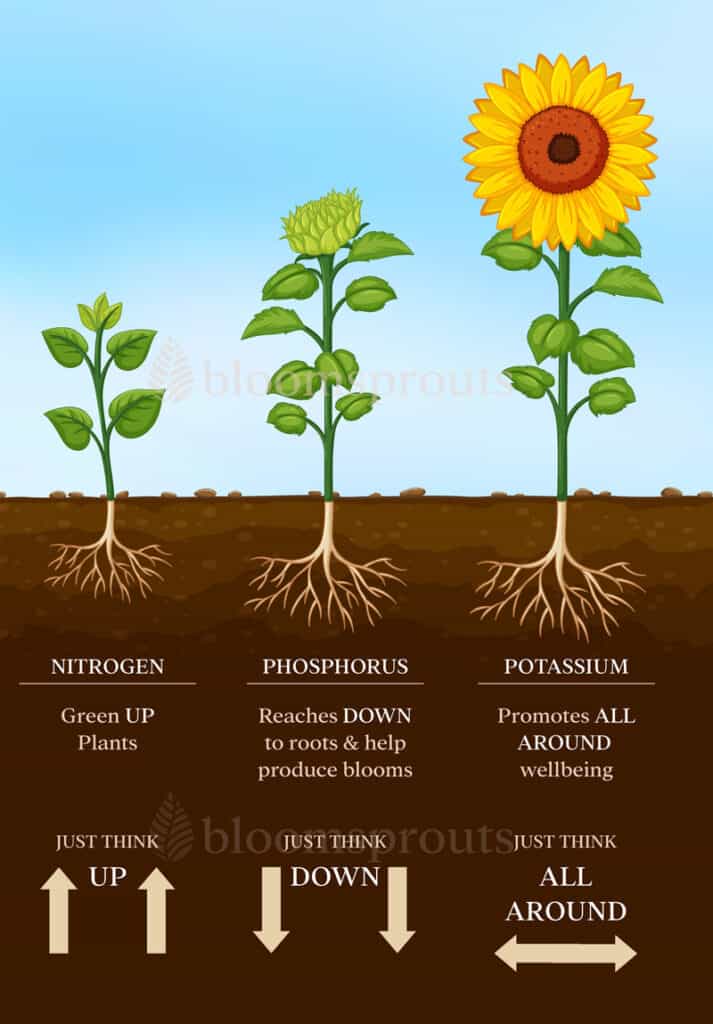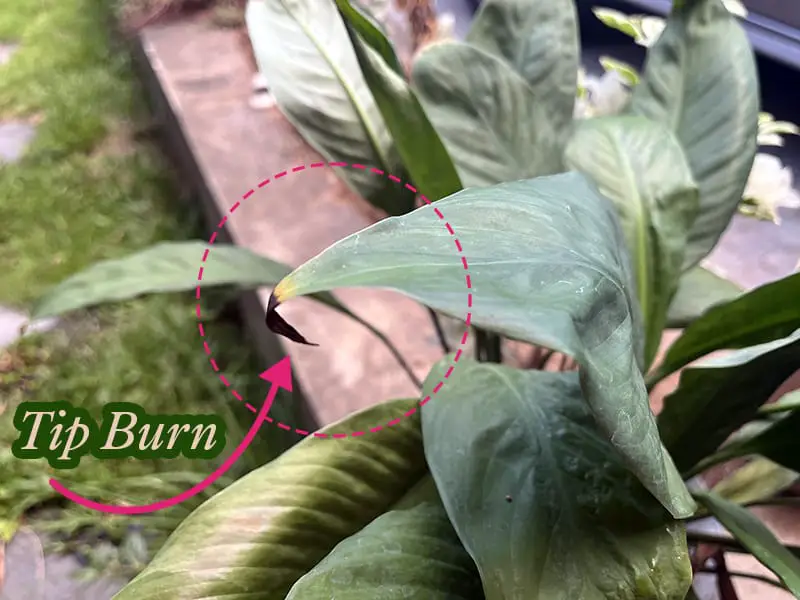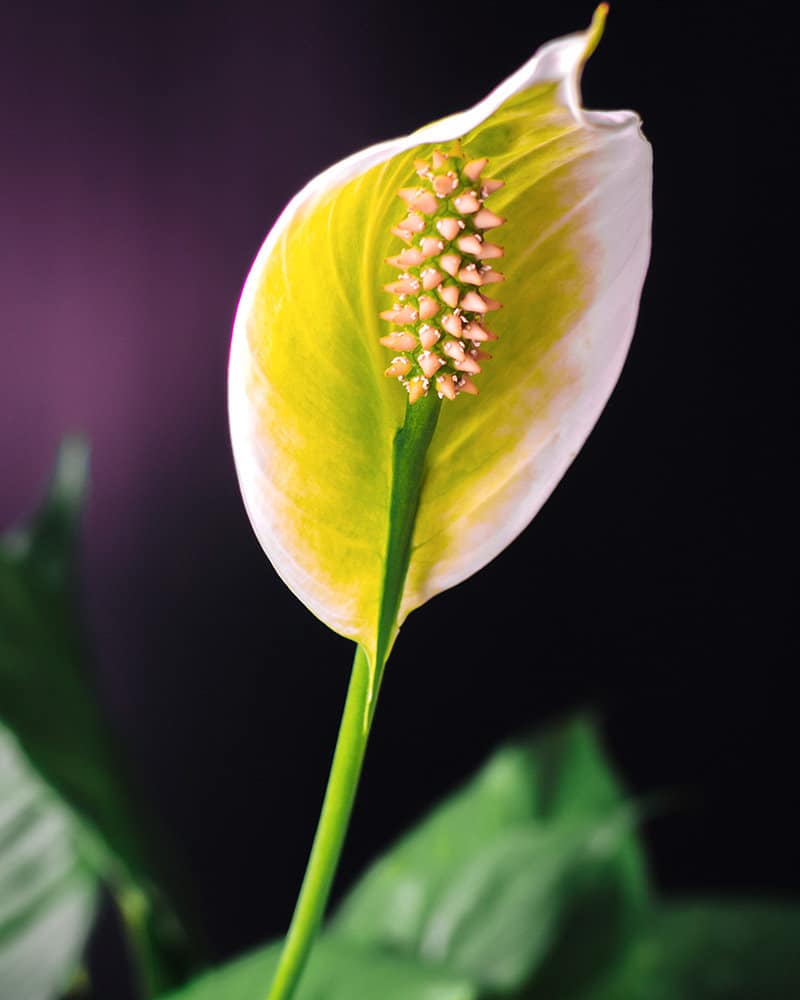
When it comes to fertilizing peace lilies, more is not always better. Over-fertilizing can actually do more harm than good, leading to leaf burn or other problems. So how often should you fertilize a peace lily? And what’s the best way to go about it?
Generally, Peace lily plants do not require excessive fertilization and only require a balanced fertilizer every four to six weeks during spring and summer. This will encourage healthy growth and blooming.
In this article, we will discuss everything you need to know about fertilizing peace lily plants, including the best fertilizer for peace lilies, how often to fertilize, and common mistakes to avoid.
- Why does a peace lily need fertilizing
- When should you fertilize your peace lily
- Choosing the right fertilizer
- Steps to apply different types of fertilizer
- My choice of fertilizer
- Natural fertilizer alternatives for peace lilies
Let’s get started!
Bloomsprouts may earn an affiliate commission if you purchase something through recommended links.
Why Does a Peace Lily Need Fertilizing
Peace lily plants need mineral nutrients from the soil to grow, fight off diseases and pests, and produce blooms.
While outdoor peace lilies can get these nutrients replenished naturally through rain and decomposing organic matter, indoor spathiphyllum rely on their owners to fertilize them regularly.
Without proper fertilization, even if you are giving your peace lily the ideal growing conditions, it will eventually start to show signs of nutrient deficiencies such as yellowing leaves, stunted growth, and fewer blooms.
What nutrients to look for in fertilizers?
The three main nutrients that every fertilizer must have are nitrogen (N), phosphorus (P), and potassium (K). These are also known as macronutrients.

Nitrogen is essential to ensure that your peace lily has lush, green foliage. Phosphorus is responsible for promoting root growth and flowering. While Potassium helps the plant resist stress and diseases.
Additionally, your peace lily could benefit from micronutrients such as Iron, Zinc, Chlorine, Nickel, Calcium, and Sulphur so that it can grow to its full potential.
There will be different ratios of these nutrients in each fertilizer, so make sure you choose a balanced fertilizer or one with higher nitrogen content for your peace lilies.
When Should You Fertilize Your Peace Lily
Now that you know the importance of fertilizing your peace lily and what nutrients to look for, let’s go over a few things that will determine when you should fertilize.
Avoid Fertilizing in Autumn & Winter
As I mentioned, you should fertilize your peace lily every four to six weeks during its growing season, which is from spring to summer.
While peace lilies do not enter a dormant period like many other plants, their growth will naturally slow down during fall and winter due to shorter days and lower temperatures.
This means the plant does not need as many nutrients and will suffer if you continue to fertilize it during this time.
Excess minerals will accumulate in the soil, reducing the plant’s ability to take up water and even damaging the roots.
During these months, you can stop fertilizing the peace lily altogether or fertilize it only once every two to three months.
If you live in an area (USDA plant hardiness zones 10 to 12) with a year-round warm climate, your peace lily will likely appreciate being fertilized all year long.
Signs Your Peace Lily Require Immediate Fertilizing
A peace lily plant does not usually display symptoms of nutrient deficiency at an early stage.
However, if you notice that your peace lily growth has stunted and the flower not blooming despite providing ideal growing conditions, this could be a sign that it’s time to fertilize.

It is also common for malnourished new leaves to curl downwards, accompanied by browning leaves at the tips and edges. This is also known as tip burn.
Lastly, the yellowing of leaves is an indication of nitrogen or potassium deficiency in plants. Yellowing usually begins on older leaves and eventually spreads to younger leaves.
Peace lilies that show these symptoms need to be fertilized immediately with balanced liquid fertilizer. Slow-release pellets can also be used, but it will take a while for them to show results.
Signs of Over Fertilization in Peace Lily
If you over-fertilize your peace lily, you may start to notice white crusts on the soil surface. This is a sign of salt buildup and will eventually damage the roots if not flushed.

Other symptoms of over-fertilization include browning on the leaf tips and margins and greening of flowers’ spathes.
How to Fix Over-Fertilized Peace Lilies
If you think you have over-fertilized your peace lily, the first thing you need to do is flush the soil with plenty of water.
Place your potted plant in the sink and run lukewarm water through the soil for a few minutes to remove as much salt buildup as possible.
After flushing the soil, let the excess water drain out completely to avoid root rot. You may need to do this a few times to completely remove the fertilizer salts.
Once the fertilizer has been flushed out, stop fertilizing your peace lily for a month and see if it recovers. If not, you may need to repot the plant in a fresh potting mix.
Choosing the Right Fertilizer for Peace Lily
Now that you know all about fertilizing peace lilies, it’s time to choose the right fertilizer for your plant.
Different Types of Fertilizers
There are many different types of fertilizer available on the market, and it can be overwhelming to choose the right one for your peace lily.
Here is a quick rundown of the most common types of fertilizer:
1. Liquid Fertilizer
Liquid fertilizers are the most popular type of fertilizer for peace lilies. It is easy to use and quickly absorbed by the plant, so you can see results quickly.
Another advantage of liquid fertilizer is that as they are pre-measured, each application contains even amounts of nutrients, which reduces the risk of providing too much or too little fertilizer.
The only downside to using liquid fertilizer is that they need to be applied more frequently than other types of fertilizer.
2. Fertilizer Granules
Fertilizer granules are another popular type of fertilizer for peace lilies. They are easy to use and can be applied directly to the potting mix or diluted in water.
Granular fertilizers are slow-release and last longer than liquid fertilizers, so you don’t need to apply them as often. This is perfect for busy plant owners who don’t have the time to fertilize their plants every month or planning to go on vacation.
However, the concentration of nutrients in granular fertilizer may not be as evenly distributed and will vary between each pellet.
3. Fertilizer Spikes
Fertilizer spikes are long, thin rods that are inserted directly into the soil. They slowly release nutrients over time, so you don’t need to fertilize as often.
This is the easiest and mess-free way to fertilize potted plants, as you just need to insert the spikes into the soil and let them do their job.
However, these spikes can be much more expensive than other types of fertilizer and may not provide enough nutrients for large peace lily plants.
Slow-Release Fertilizer vs Liquid Fertilizer
I often forget to fertilize my plants, so personally, I prefer using slow-release fertilizer for my peace lily plants as they are much easier to use and I don’t need to worry about forgetting to fertilize my plants for a few months.
However, with slow-release fertilizers, I can’t control how much nutrients my plant is getting. If the pellet dissolves too quickly, the roots of my plant may be damaged from the high concentration of nutrients.
If you are more experienced with fertilizing plants or have the time to fertilize your plants every month, then liquid fertilizer would be a better option for you as you can control how much nutrients your plant is getting.
You can dilute the fertilizer to provide a lower concentration of nutrients or use it as is for a quick growth boost.
Synthetic Vs Organic
When choosing a fertilizer, you will also need to decide if you want to use synthetic or organic fertilizer.
Synthetic fertilizers are made from chemicals and minerals and are usually cheaper than organic fertilizers. However, they can be harmful to the environment if not used properly.
Organic fertilizers are made from natural ingredients such as compost and manure, which mean the dose of nutrients can vary. They are also more expensive than synthetic fertilizers but are much safer for the environment.
If you are concerned about the impact of fertilizer on the environment, then I would recommend using organic fertilizer for your peace lily plant.
Pay Attention to the NPK Ratio
When looking at a fertilizer label, macronutrients will be listed in the order of N-P-K. The numbers represent the percentage of each nutrient by weight.
For example, a fertilizer that is labeled 10-5-5 contains 10% nitrogen, 5% phosphorus, and 5% potassium.
It’s important to note that not all fertilizers are created equal and that the N-P-K ratio will vary depending on the type of fertilizer you use.
The best fertilizer for peace lilies is a balanced fertilizer that contains equal parts nitrogen (N), phosphorus (P), and potassium (K). A common ratio for a balanced fertilizer is 10-10-10.
However, as peace lily mainly produce foliage, a fertilizer with a higher nitrogen content such as 20-10-10 can also be used.
How to Apply Different Types of Fertilizer
Now that you know the different types of fertilizer available, let’s take a look at how to apply each type.
Applying Liquid Fertilizer for Peace Lilies
Step 1: Gather Your Supplies
Before you start fertilizing your peace lily, you will need to gather the following supplies:
- A balanced liquid fertilizer (10-10-10)
- A watering can or bucket
- A Measuring cup or dropper
Step 2: Dilute the Fertilizer in Water
You should not fertilize your peace lily with full-strength fertilizer as this can cause over-fertilization and damage the roots.
When fertilizing your peace lily for the first time, dilute the fertilizer at half the recommended strength.
For example, if the fertilizer you are using recommends mixing 1 tablespoon (15ml) of fertilizer per gallon (4L) of water, then you should only use 1/2 tablespoon (7.5ml) of fertilizer per gallon (4L) of water.
You can always add more fertilizer later if needed. But, if you start with too much fertilizer, it will be much harder to fix the damage.
Step 3: Water the Peace Lily with the Fertilizer Solution
Once you have diluted the fertilizer, water your peace lily plant as usual until the water starts to run out of the drainage holes in the pot.
Make sure to evenly soak the soil and avoid getting any fertilizer on the leaves as this can cause them to burn.
Step 4: Watch for Signs of Over-Fertilization
For the next few days, keep an eye on your peace lily plant for any signs of over-fertilization such as wilting leaves or browning of the leaf tips and margins.
If you notice any of these signs, stop fertilizing your peace lily and flush the soil with plenty of water to remove any excess fertilizer. Allow the soil to dry out completely before watering your plant again.
When you see no signs of over-fertilization, continue fertilizing your peace lily every month during the growing seasons.
Applying Granular Fertilizer for Peace Lilies
The process is fairly similar to applying liquid fertilizer, but instead of diluting the fertilizer in water, you will need to mix it into the soil.
Sprinkle the granular fertilizer on top of the soil and use a hand fork to loosen up the soil and mix in the fertilizer. Make sure to evenly distribute the granules and avoid getting any on the leaves.
You should also take care not to over-fertilize your peace lily as this can damage the roots. Start with half the recommended amount of fertilizer and increase as needed.
To activate the granular fertilizer, water the plant as usual until the water starts to run out of the drainage holes in the pot.
As with liquid fertilizer, keep an eye on your peace lily for any signs of over-fertilization, and stop fertilizing if you see any problems.
Applying Fertilizer Spikes for Peace Lilies
Fertilizer spikes are the easiest type of fertilizer to apply as you simply push them into the moist soil between the peace lily stems and the pot rim.
When using fertilizer spikes, make sure to follow the instructions on the package as they can vary depending on the brand.
In general, you will only need one or two fertilizer spikes for a four-inch pot. For every 2-inch increase in pot size, you can add one more fertilizer spike.
As with other types of fertilizer, it’s important not to over-fertilize your peace lily as this can damage the roots. It’s always better to start with fewer fertilizer spikes and increase as needed.
Activate the fertilizer spikes by watering your plant as usual until the water starts to run out of the drainage holes in the pot.
You need to replace the fertilizer spikes every two months or so, as they will slowly break down and release their nutrients into the soil.
My Choice of Fertilizer for Peace Lily Plants
There are many different types and brands of fertilizer available on the market. And, it can be overwhelming trying to choose the right one for your peace lily plant.
If you are looking for a good all-purpose fertilizer that you can use for both indoor and outdoor plants, I recommend using Miracle-Gro Indoor Plant Food.
This fertilizer is easy to use and contains all the essential nutrients that your peace lily plant needs to grow healthy and strong. Make sure to dilute the fertilizer in water even though it says you can apply it directly to the soil.
If you prefer to use organic fertilizer, I recommend using Neptune’s Harvest Organic Hydrolized Fish & Seaweed Fertilizer.
This fertilizer is OMRI (Organic Materials Review Institute) listed and has the perfect balance of fish to kelp for optimal plant growth. It’s also a great fertilizer for other types of plants such as vegetables, fruits, and flowers.
Alternative Natural Fertilizer Choices for Peace Lilies
Besides buying a commercial fertilizer, there are many other materials you can use in place of fertilizer to provide your peace lily with nutrients.
Here are some alternative choices for fertilizing your peace lily:
Using Coffee Grounds for Peace Lilies
Coffee grounds are a great source of nitrogen and can be used to fertilize your peace lily. You can either work the coffee grounds into the soil or mix them with your compost pile.
Additionally, coffee grounds can improve soil drainage and aeration in the soil, which promotes root growth and prevents root rot.
It can also serve as a pH balancer for the soil and help lower the pH level to a level that peace lilies prefer (around 5.8 to 6.5).
Furthermore, I found that every time I use the coffee ground to fertilize my peace lilies, my dog will stay away from the plants.
I am not sure if it is because of the smell or taste, but this is a bonus if you have a pet that likes to dig in your soils and chew on your plants (especially because peace lily contains calcium oxalate crystals which can be poisonous to pets)
Using Epson Salt as Fertilizer for Peace Lilies
Epson salt is another great supplement to your regular fertilizer as it contains hydrated magnesium sulfate (magnesium and sulfur), which is essential for the growth and development of peace lilies.
It helps peace lilies absorb other nutrients such as nitrogen and phosphorus more efficiently.
Thus, increasing the formation of chlorophyll in leaves, which gives leaves their green color and promote photosynthesis. It can even improve flower blooming and help your peace lilies grow bushier.
To use Epson salt as fertilizer for your peace lilies, mix 1 tablespoon (15ml) of Epson salt with 1 gallon (4L) of water. Shake and stir the mixture until the salt is completely dissolved and apply it to the soil around your plants.
Do this once every 4 to 6 weeks during the growing season.
Reusing Grass Clippings as Fertilizer for Peace Lilies
If you have a lawn, chances are you will end up with a lot of grass clippings. Don’t throw them away as they make great fertilizer for peace lilies.
Grass clippings are high in nitrogen and potassium, which are essential nutrients for peace lilies.
Gather the grass clippings into a bucket until about 2/3 full and fill the rest of the bucket with water.
Then let it sit for three days while stirring the solution every day. Cover the bucket to prevent mosquito breeding.
After three days, your grass clippings will have turned into “liquid gold” fertilizer that is high in nitrogen and perfect for peace lilies.
To use, simply pour the solution around the base of your plants and water as usual. Do this once every two weeks during the growing season.
Using Fish Tank Fertilizer for Peace Lilies
If you have an aquarium, the ‘dirty’ water from your fish tank can actually be used to fertilize your peace lilies.
The water will be high in beneficial bacteria, as well as potassium, phosphorus, and nitrogen, which are all nutrients that peace lilies need.
Simply, fill your watering can with water from your fish tank and use it to water your peace lilies as usual. Do this once a month.
Note:
If your aquarium is filled with salt water or you’ve added a solution to treat your fish for disease, do not use the water on your peace lilies as it may harm the plants.
